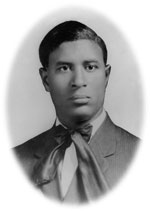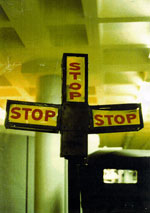
The lobby of the Texas Transportation Institute’s (TTI) Gilchrist Building displays some of the first electric traffic signals used in the United States. That equipment, which evolved from a number of even more creative manual devices, has a rich and telling history. Part of it we owe to one of the country’s first Black inventors, Garrett Morgan, who some in the transportation business refer to as “The Father of Transportation Technology.”
The son of slaves, Morgan had only an elementary education. He left Kentucky in 1895 as a teenager searching for opportunity. He settled in Cincinnati, Ohio, and soon became well-known for his talent as a sewing machine repairman, eventually starting his own tailor shop. In fact, much of the sewing in his 32-employee operation was done on machines he built. Morgan is also recognized as the inventor of a version of the gas mask eventually modified and used by the U.S. Army in World War I. He established a successful newspaper, and over his lifetime held patents on a variety of personal grooming products.
It was his experiences driving on the streets of Cleveland, however, that prompted Morgan to enter the transportation arena. Early twentieth-century vehicle crashes were frequent, and after witnessing the death of a young girl in a collision between an automobile and a horse-drawn carriage, he crafted a T-shaped pole unit that featured three positions: Stop, Go and an all-directional stop position that halted traffic in all directions to allow pedestrians to cross streets more safely.

In his 1923 U.S. patent for the manual traffic signal, Garrett Morgan stated “This invention relates to traffic signals, and particularly to those which are adapted to be positioned adjacent the intersection of two or more streets and are manually operable for directing the flow of traffic…In addition, my invention contemplates the provision of a signal which may be readily and cheaply manufactured.”
Morgan’s hand-cranked semaphore traffic management device was in use throughout North America until all manual traffic signals were replaced by early models of the automatic red-, yellow- and green-light traffic signals currently used around the world.
Shortly before his death in 1963, the United States Government awarded Morgan a commendation for his traffic signal.
